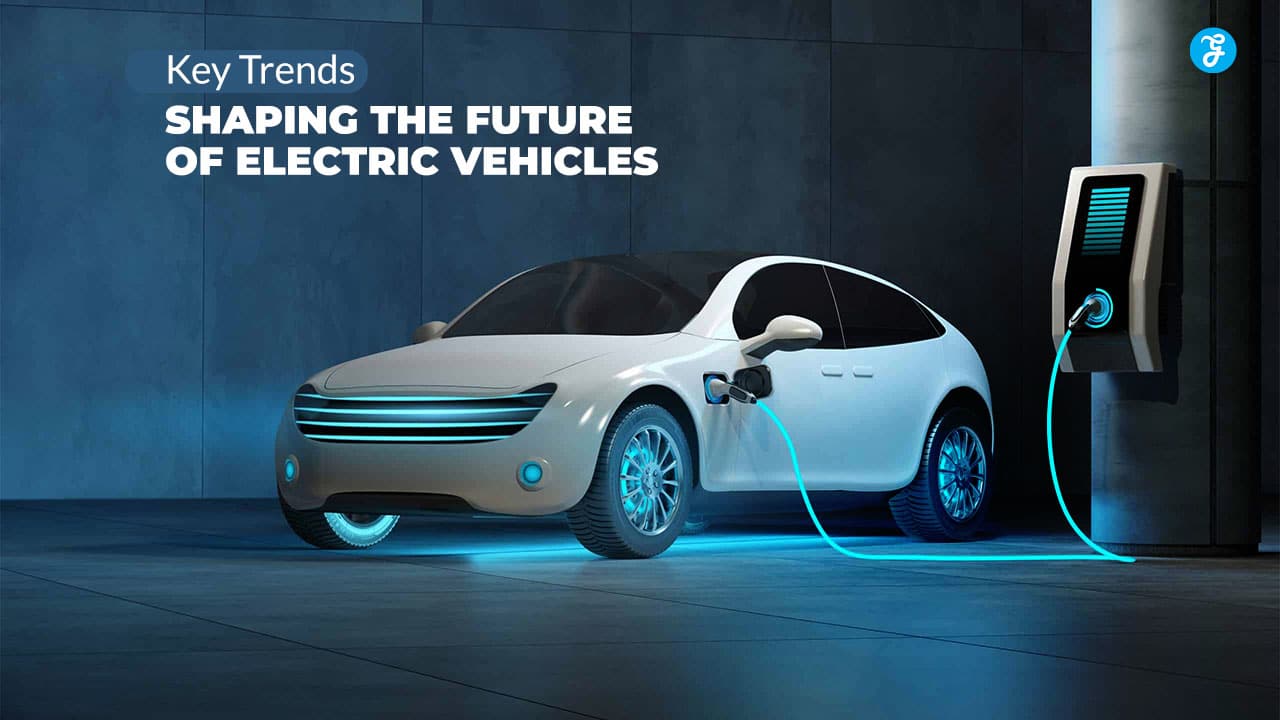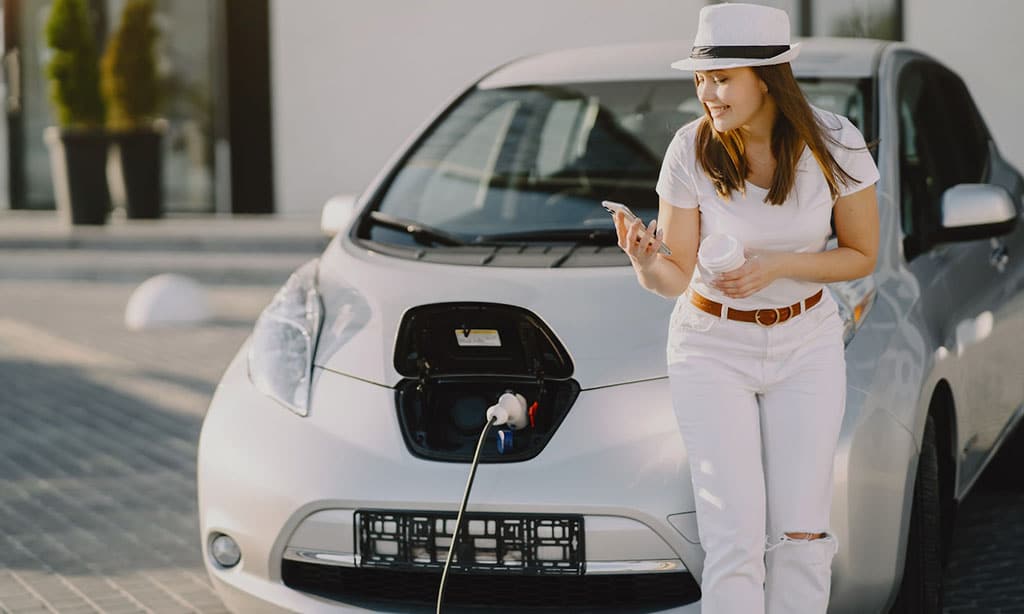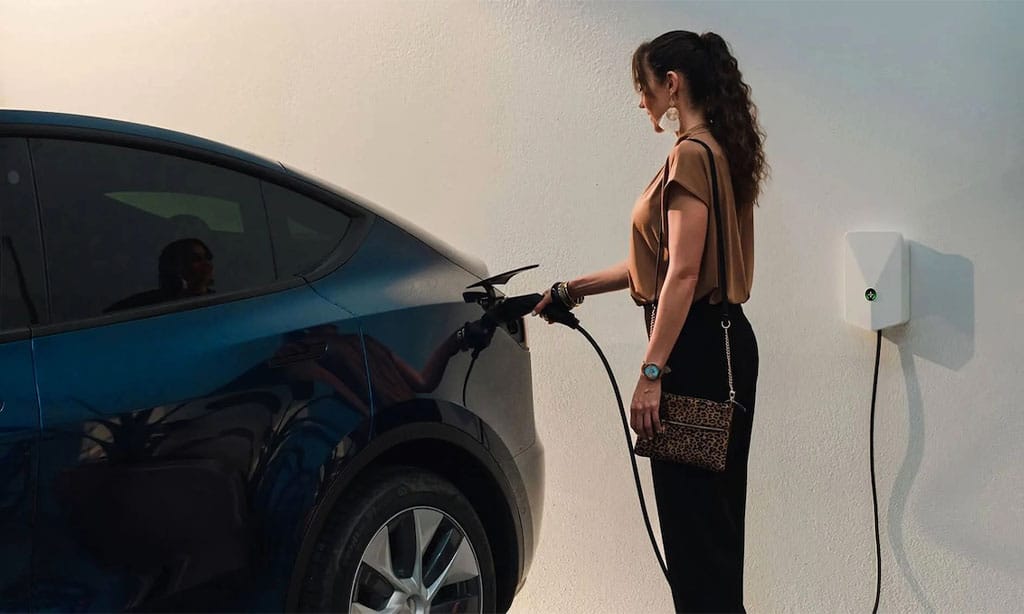The growing adoption of electric vehicles (EVs) is driving a paradigm shift in the automotive industry. Once a niche market dominated by eco-conscious early adopters, EVs are now on the verge of becoming mainstream. This transformation is not merely a change in the vehicles we drive but represents a deeper movement toward sustainability, technological advancement, and societal progress.
From groundbreaking innovations in battery technology to supportive government policies, the electric vehicle landscape is evolving rapidly. In this comprehensive exploration, we delve into seven key trends shaping the future of EVs, shedding light on the pivotal developments revolutionizing transportation.
The EV Revolution is Here
The electrification of transportation has become one of the most significant technological revolutions of the 21st century. Electric vehicles represent a cleaner, quieter, and more efficient mode of transportation, with the potential to drastically reduce greenhouse gas emissions and dependence on fossil fuels.
According to the International Energy Agency (IEA), EVs accounted for over 14% of global vehicle sales in 2023, a significant jump from just 4% in 2019. Several factors, including technological innovations, global climate goals, and shifting consumer preferences, are responsible for this exponential growth.
With the global EV market expected to reach $800 billion by 2030, understanding the trends driving this transformation is crucial for businesses, policymakers, and consumers.
Trend 1: Advancements in Battery Technology
Why Battery Technology is a Game-Changer?
At the core of every electric vehicle lies its battery, a critical component that determines the range, performance, and affordability of the vehicle. Batteries account for approximately 30% to 40% of the cost of an EV, making advancements in this area vital for widespread adoption.
Key Innovations in Battery Technology
1. Lithium-Ion Evolution:
Lithium-ion batteries remain the most widely used battery type in EVs due to their superior energy density and relatively low cost. New innovations are increasing battery lifespan and reducing degradation, ensuring long-lasting performance for EV owners.
2. Solid-State Batteries:
Solid-state technology is a game-changer. Unlike conventional lithium-ion batteries, these use a solid electrolyte, offering higher energy density, faster charging, and enhanced safety. Companies like Toyota and QuantumScape are investing heavily in this next-generation technology, with commercial deployment expected within a decade.
3. Battery Recycling and Second Life:
Efforts to recycle batteries are gaining momentum. Companies such as Redwood Materials are developing efficient methods to recover key materials like lithium, cobalt, and nickel. Additionally, companies like Redwood Materials are repurposing used EV batteries for energy storage systems, thereby reducing waste and bolstering renewable energy grids.
4. New Materials and Chemistry:
Sodium-ion and lithium-sulfur batteries are emerging as cost-effective alternatives to traditional lithium-ion systems. These batteries reduce reliance on rare and expensive materials, making EV production more sustainable.
Impact on EV Adoption
With advancements in battery technology, the average range of EVs has increased to over 300 miles per charge, alleviating range anxiety. At the same time, battery costs have fallen by 85% since 2010, bringing EV prices closer to parity with traditional vehicles.
Trend 2: Expansion of Charging Infrastructure
Addressing Range Anxiety
One of the biggest hurdles to EV adoption is range anxiety—the fear of running out of power without access to a charging station. To counter this, countries and private companies are investing billions into the development of charging infrastructure.
Innovations in Charging Infrastructure
1. Fast-Charging Networks:
Worldwide deployment of ultra-fast charging stations, capable of delivering 80% charge in under 15 minutes, is underway. Tesla’s Supercharger network and Ionity’s stations in Europe are leading the charge.
2. Wireless Charging:
Cities like Oslo and Detroit are testing wireless charging technology, which charges vehicles via electromagnetic fields. This innovation could revolutionize convenience for EV owners, particularly in urban areas.
3. Home and Workplace Solutions:
Over 80% of EV owners charge their vehicles at home or work. Governments are incentivizing the installation of residential charging stations, while businesses are integrating EV chargers into office parking lots to attract eco-conscious employees.
4. Dynamic Charging:
Researchers are exploring dynamic charging, where EVs charge wirelessly while driving on specially equipped roads. Sweden and Germany are testing this concept, showing promising early results.
Global Charging Infrastructure development
| Region | Charging Stations (2023) | Planned Growth |
|---|---|---|
| North America | 140,000+ | 500,000 by 2030 (USA target) |
| Europe | 375,000+ | 1.5 million by 2030 (EU goal) |
| China | 1.8 million | Continuous large-scale expansion |
Robust infrastructure will be the backbone of the EV revolution, enabling seamless long-distance travel and mass adoption.
Trend 3: Integration of Autonomous Driving Features
The Role of AI in EVs
Autonomous driving and electric vehicles go hand in hand. EVs, with their advanced software and digital architecture, are ideally suited for self-driving technologies.
Levels of Autonomy
The Society of Automotive Engineers (SAE) defines six levels of driving automation, ranging from Level 0 (no automation) to Level 5 (fully autonomous). Today, most EVs offer Level 2 features, such as adaptive cruise control and lane-keeping assist, while companies like Tesla and Waymo are testing Level 4 and Level 5 technologies.
Benefits of Combining Autonomy with Electrification
1. Energy Efficiency:
Autonomous systems optimize driving patterns, reducing energy consumption and extending range.
2. Safety:
Advanced sensors and AI reduce the likelihood of accidents by detecting and responding to hazards faster than humans.
3. Fleet Applications:
Companies like Waymo and Rivian are piloting autonomous electric taxis and delivery vehicles, promising cost-effective and sustainable urban mobility solutions.
Trend 4: Government Policies and Incentives
Driving EV Adoption Through Policy
Governments worldwide are playing a critical role in promoting EV adoption through incentives, mandates, and infrastructure investments.
Key Policy Measures
1. Tax Credits and Subsidies:
Many countries offer tax rebates or direct subsidies for purchasing EVs. For example, the U.S. offers up to $7,500 in tax credits under the Inflation Reduction Act.
2. Zero-Emission Zones:
Cities like London and Paris are introducing zero-emission zones, where only electric or hybrid vehicles can operate, encouraging EV adoption.
3. Infrastructure Investments:
The European Union’s Green Deal allocates billions for EV charging networks, while China is funding large-scale infrastructure projects to maintain its position as the largest EV market.
Policy Goals
| Region | Policy Target | Target Year |
|---|---|---|
| California | 100% zero-emission vehicle sales | 2035 |
| European Union | 55% CO2 reduction from cars | 2030 |
| China | 40% EV penetration in sales | 2030 |
Policy measures are critical for shaping consumer behavior and accelerating the transition to electric mobility.
Trend 5: Growth in EV Models Across Segments
Diversifying the Electric Vehicle Market
High-end sedans and luxury cars, like the Tesla Model S, dominated the early electric vehicle market. However, the EV industry is evolving rapidly, with manufacturers now offering a wide range of models across different segments. This diversification reflects growing consumer demand for affordable, practical, and versatile electric vehicles, making EVs accessible to a broader audience.
Key Segments Driving EV Model Growth
1. Affordable and Compact EVs:
The rise of budget-friendly EVs is making electric mobility attainable for the average consumer. Cars like the Chevrolet Bolt, Nissan Leaf, and the upcoming Tata Tiago EV cater to families and individuals seeking cost-effective, environmentally friendly options. These vehicles emphasize practicality, lower running costs, and moderate range for urban commutes.
2. Luxury and Performance EVs:
Luxury automakers continue to innovate with high-performance electric vehicles. Brands like Porsche, Audi, and BMW have launched models such as the Porsche Taycan and Audi e-tron GT, delivering powerful performance alongside opulent interiors. These cars appeal to high-end consumers looking for a seamless blend of speed, style, and sustainability.
3. Electric SUVs and Crossovers:
SUVs and crossovers are among the fastest-growing segments in the EV market, combining spacious interiors with advanced features. Models like the Tesla Model Y, Hyundai Ioniq 5, and Kia EV6 have gained immense popularity, offering excellent range and versatility. These vehicles cater to families and adventure-seekers who need utility without sacrificing eco-friendliness.
4. Electric Pickup Trucks:
The introduction of electric trucks like the Ford F-150 Lightning, Rivian R1T, and Tesla Cybertruck is transforming the commercial and recreational vehicle market. These EVs promise robust towing capacity, off-road capabilities, and storage flexibility, challenging the dominance of traditional gas-powered trucks.
5. Commercial and Delivery EVs:
Commercial electric vehicles, such as the Rivian Electric Delivery Van (used by Amazon) and the Mercedes-Benz eSprinter, are playing a pivotal role in decarbonizing logistics. With lower maintenance and fuel costs, these vehicles appeal to businesses aiming to reduce their operational carbon footprint.
6. Two-Wheelers and Micro-Mobility Solutions:
In regions with high population density and short travel distances, electric scooters, mopeds, and bikes are gaining traction. Companies like Ola Electric and Gogoro are expanding their portfolios with affordable two-wheeler EVs designed for urban mobility.
Impacts of Model Diversification
1. Increased Consumer Choice:
A wider variety of EV models ensures that consumers can find a vehicle that matches their needs, whether it’s affordability, luxury, utility, or performance.
2. Competitive Pricing:
The diversification of EV models is driving healthy competition among automakers, leading to reduced prices and improved features for consumers.
3. Market Expansion:
EV manufacturers are entering untapped markets, including rural areas, small businesses, and developing countries, broadening the global EV footprint.
4. Specialized Solutions:
From rugged pickup trucks for outdoor enthusiasts to electric delivery vans for businesses, automakers are creating specialized solutions that cater to niche markets.
Challenges in Segment Diversification
While segment diversification is a positive development, it comes with challenges:
- High Development Costs: Designing and manufacturing new EV models require significant investment, which can strain automakers.
- Consumer Education: Potential buyers must understand the benefits of different EV models to make informed decisions.
- Charging Infrastructure Needs: As the number and diversity of EVs grow, charging networks must keep pace to support various use cases, including commercial fleets and rural areas.
Trend 6: The Role of Sustainable Manufacturing
Greening the Supply Chain
Sustainability extends beyond the vehicles themselves. The production process of EVs and their components significantly impacts their overall environmental footprint. As consumers demand eco-friendly solutions, automakers are adopting sustainable practices throughout the supply chain to ensure that EVs deliver on their promise of reducing emissions.
Key Developments in Sustainable Manufacturing
1. Battery Recycling Initiatives:
One of the most critical aspects of sustainable manufacturing is the recycling of EV batteries. End-of-life batteries are rich in valuable materials like lithium, cobalt, and nickel. Recycling not only reduces the environmental impact of mining but also lowers the cost of future battery production. Companies like Redwood Materials and Umicore are leading efforts in creating closed-loop battery systems.
2. Renewable Energy in Production:
Automakers are increasingly powering their factories with renewable energy. Tesla’s Gigafactories and BMW’s Leipzig plant in Germany are excellent examples of facilities utilizing solar and wind energy to manufacture EVs sustainably.
3. Lightweight and Recycled Materials:
Using lightweight materials like aluminum and carbon fiber reduces the overall energy consumption of EVs. Moreover, automakers are incorporating recycled plastics and other upcycled materials into vehicle interiors. Volvo and Polestar have committed to phasing out leather in favor of sustainable alternatives like vegan textiles.
4. Water Conservation:
Companies are revamping water-intensive manufacturing processes to conserve resources. Toyota, for instance, has reduced water usage in its EV production lines by implementing advanced recycling systems.
Why Sustainable Manufacturing Matters?
While EVs are often marketed as “zero-emission” vehicles, their environmental impact during production can be significant. By adopting sustainable practices, automakers can enhance the lifecycle benefits of EVs, making them genuinely eco-friendly from cradle to grave.
Trend 7: Emergence of EVs in Public Transport
Electrifying Urban Mobility
Electric vehicles are not just transforming personal transportation; they are revolutionizing public transport systems worldwide. From buses and taxis to trains and ferries, the adoption of electric mobility in public transport is driving cities toward cleaner air and reduced operational costs.
Key Advancements in EV Public Transport
Electric Buses:
Cities like Shenzhen, China, have fully electrified their public bus fleets, showcasing the potential of electric buses in reducing urban air pollution. Electric buses are gaining traction globally due to their lower operating costs and zero-emission capabilities.
Case Study: Los Angeles aims to electrify its entire bus fleet by 2030, expecting to save millions annually in fuel costs.
2. Electric Ride-Sharing Services:
Ride-sharing platforms like Uber and Lyft are committing to transitioning their fleets to EVs. Uber has pledged to become a zero-emissions platform in major global cities by 2030, partnering with manufacturers to offer affordable EV leases to drivers.
3. Electric Trains and Ferries:
Electric trains powered by battery or hybrid systems are increasingly replacing diesel engines on regional routes. Norway has also introduced electric ferries to reduce emissions in its fjords, setting a benchmark for sustainable maritime transport.
4. Autonomous Electric Shuttles:
Cities like Dubai and Singapore are testing autonomous electric shuttles for “last-mile” connectivity. Designed for short-distance travel, these shuttles bridge the gap between public transit stations and urban centers.
Benefits of EVs in Public Transport
1. Reduced Air Pollution:
Public transport systems powered by electricity produce zero tailpipe emissions, leading to better air quality in densely populated areas.
2. Cost Savings:
EVs in public transport save on fuel and maintenance costs, enabling cities to allocate resources to other essential services.
3. Improved Urban Mobility:
The integration of EVs with public transit apps and smart city infrastructure enhances the convenience and efficiency of urban travel.
Challenges and Future Outlook
While the benefits are significant, challenges such as the high upfront cost of electric buses and the need for robust charging infrastructure remain. Governments and private entities must collaborate to address these barriers, ensuring a smoother transition to electrified public transport.
Conclusion
Electric vehicles are more than just a trend—they represent a fundamental shift in how the world approaches mobility. The advancements in battery technology, growth in charging infrastructure, and integration of sustainable practices have set EVs on the path to becoming the new normal.
Furthermore, supportive government policies and the electrification of public transport are accelerating this transition, making clean, efficient, and affordable transportation accessible to all.







































